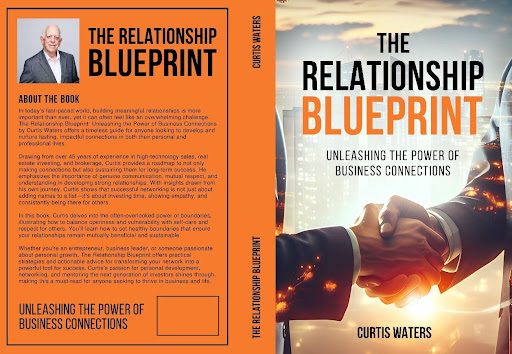
Relationship Blueprint
In a world where relationships with others often take center stage, the most vital connection we have—the one with ourselves—can easily be overlooked. Curtis Waters’ The Relationship Blueprint isn’t just about building stronger ties with others; it’s also a profound guide to improving one’s relationship with selfhood. This exploration of self-awareness, emotional intelligence, and personal growth offers a roadmap for individuals to reconnect with their inner selves and embrace their full potential.
Selfhood as the Foundation of Relationships
Curtis begins by emphasizing a powerful truth: the way we relate to others mirrors the way we relate to ourselves. If we lack self-understanding, self-compassion, or self-worth, it’s nearly impossible to cultivate meaningful and healthy relationships with others. The Relationship Blueprint teaches readers to reflect inward, exploring their motivations, fears, and desires. By doing so, individuals can uncover and address the internal blocks that often manifest in external conflicts.
For instance, Curtis highlights how unresolved insecurities or unexamined behaviors can lead to recurring issues in relationships. By identifying these patterns, readers are encouraged to take ownership of their actions and thoughts, paving the way for a stronger and more harmonious sense of self.
Emotional Intelligence and Self-Awareness
One of the key components of improving selfhood, as Curtis explains, is emotional intelligence. This involves understanding and managing one’s emotions while also recognizing the emotions of others. By developing emotional intelligence, individuals learn to respond to life’s challenges with resilience and clarity rather than being overwhelmed by negative emotions.
The Relationship Blueprint provides actionable strategies, such as journaling exercises, mindfulness practices, and techniques for active self-reflection, to help readers build emotional awareness. These tools empower individuals to process their emotions in a healthy way, leading to greater self-acceptance and peace of mind.
The Role of Boundaries in Selfhood
Another critical lesson from the book is the importance of boundaries—not just with others, but also with oneself. Curtis stresses the need to set realistic expectations, prioritize self-care, and practice saying no when necessary. These boundaries help create a balanced and healthy relationship with oneself, fostering inner strength and confidence.
Transforming Selfhood Through Relationships
Finally, Curtis illustrates that our interactions with others can serve as mirrors, reflecting aspects of ourselves we may not have previously recognized. By improving how we relate to others—through empathy, active listening, and authentic connection—we simultaneously deepen our relationship with our own identity.
The Relationship Blueprint shows that improving one’s relationship to selfhood is not just a personal journey but a transformative process that radiates into every aspect of life. Through self-awareness, emotional intelligence, and intentional action, readers can embrace their true selves and unlock their fullest potential.
Discover the latest news and updates on The Blog Verge





